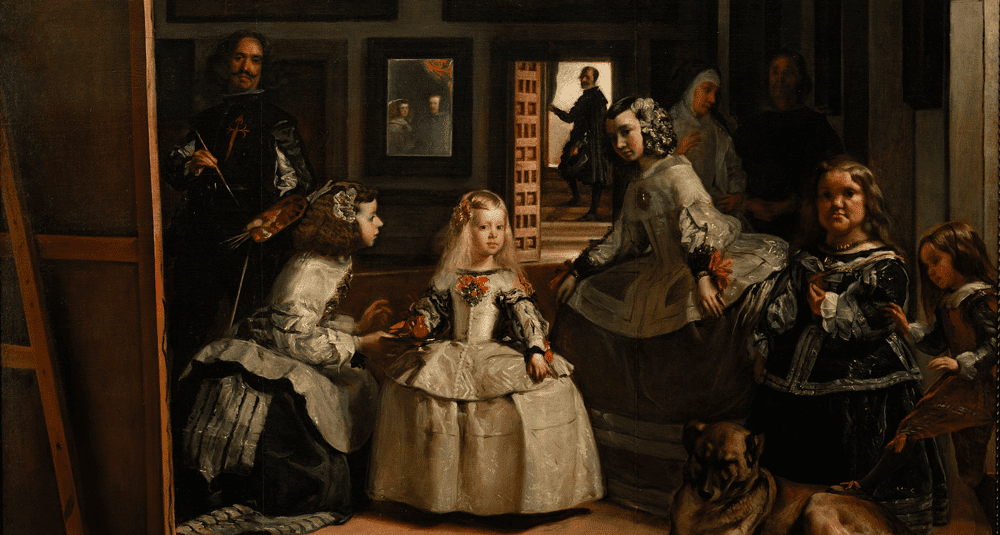Which Spanish painter painted Las Meninas in 1656?
Last Updated:
Las Meninas, a masterpiece of Baroque art, was painted in 1656 by the great Spanish painter Diego Velázquez. A true icon of Western painting, this complex and fascinating work is kept at the Prado Museum in Madrid. It embodies the apogee of the Spanish Golden Age and illustrates Velázquez’s genius as a court painter, portraitist and philosopher of the image.
Diego Rodríguez de Silva y Velázquez, born in Seville in 1599 and died in Madrid in 1660, is considered one of the greatest Spanish painters of all time. He became the official painter to King Philip IV of Spain, giving him access to the court and its secrets. Over the years, he produced numerous royal portraits, genre scenes and historical compositions, but it was with Las Meninas that he reached the pinnacle of his art.
Velázquez was admired for his mastery of light, his psychological finesse in portraits and his innovative approach to composition. His style influenced generations of artists, from Goya to Picasso.
Painted in 1656, Las Meninas depicts a scene from daily life at the royal palace in Madrid. It shows the Infanta Margarita-Theresa, daughter of Philip IV, surrounded by her ladies-in-waiting, the Meninas, a dwarf, a dog and several enigmatic characters, including the painter himself, Velázquez, who paints a canvas that we can’t see.
The richness of this work lies in the subtle interplay of glances, perspectives and mirrors. In the background, a mirror reflects the silhouettes of the King and Queen, suggesting that they are posing for Velázquez’s painting, even though their presence is only perceptible through this reflection. This reversal of point of view blurs the boundaries between reality, representation and illusion.
Las Meninas is more than a simple court portrait. It is a visual discourse on painting itself, on the status of the artist, on the viewer’s gaze. By including his own figure in the scene, Velázquez asserts an active, intellectual role, at a time when artists were often regarded as mere craftsmen. He elevated himself to the rank of thinker and creator, almost on a par with his royal patrons.
The use of atmospheric perspective, the subtle treatment of light, the complex organization of the scene and the mystery of the work make it a landmark work in the history of Western art.
Over the centuries, Las Meninas has fascinated artists, writers and philosophers. The painter Édouard Manet, an admirer of Velázquez, drew inspiration from it in his modern compositions. In 1957, Pablo Picasso produced a series of 58 canvases entirely devoted to reinterpretations of Las Meninas, proof of the work’s lasting influence.
Even the philosopher Michel Foucault, in Les mots et les choses, devoted a famous passage to analyzing the painting, highlighting his thoughts on representation, visibility and invisibility in art.
Diego Velázquez’s Las Meninas, painted in 1656, is a monument of Spanish and world painting. Behind its courtly appearance, it is an ambitious work, profoundly innovative in its composition, which questions the role of the artist, the nature of representation and the place of the viewer. In Las Meninas, Velázquez not only paints a portrait, he reinvents painting itself.
arts

Which Spanish painter painted Las Meninas in 1656?
Answer
The painting Las Meninas, painted in 1656, is the work of Spanish painter Diego Velázquez, grand master of the Golden Age and royal portraitist.